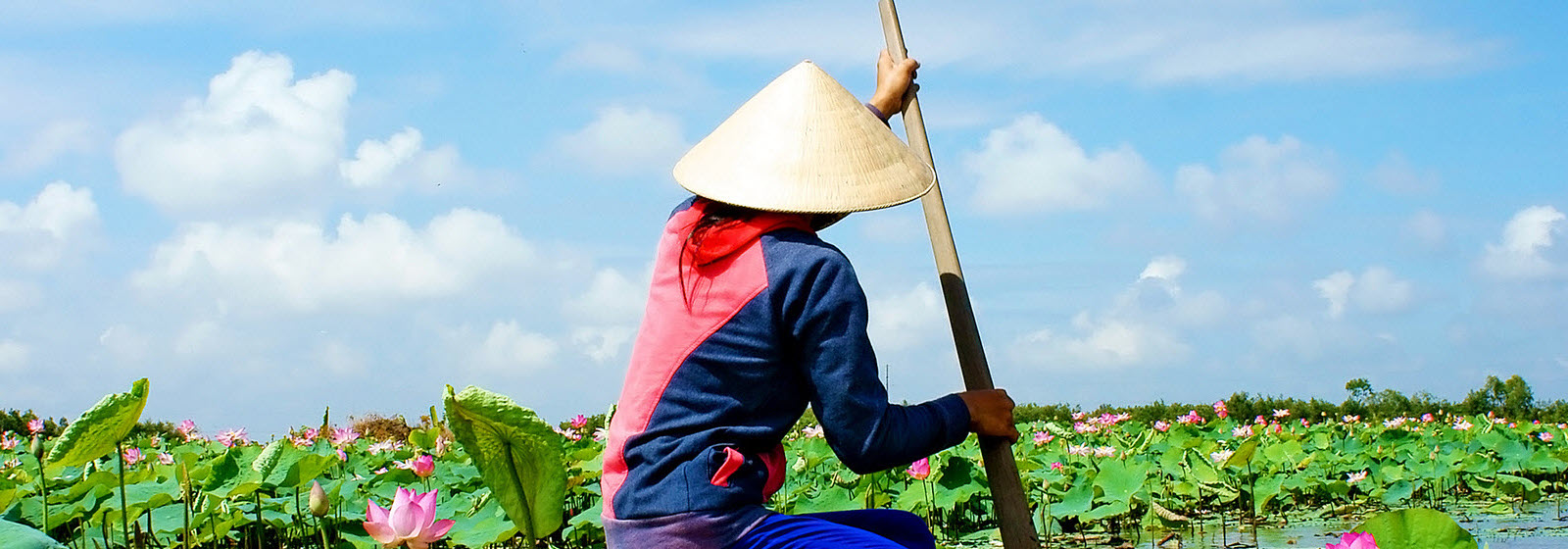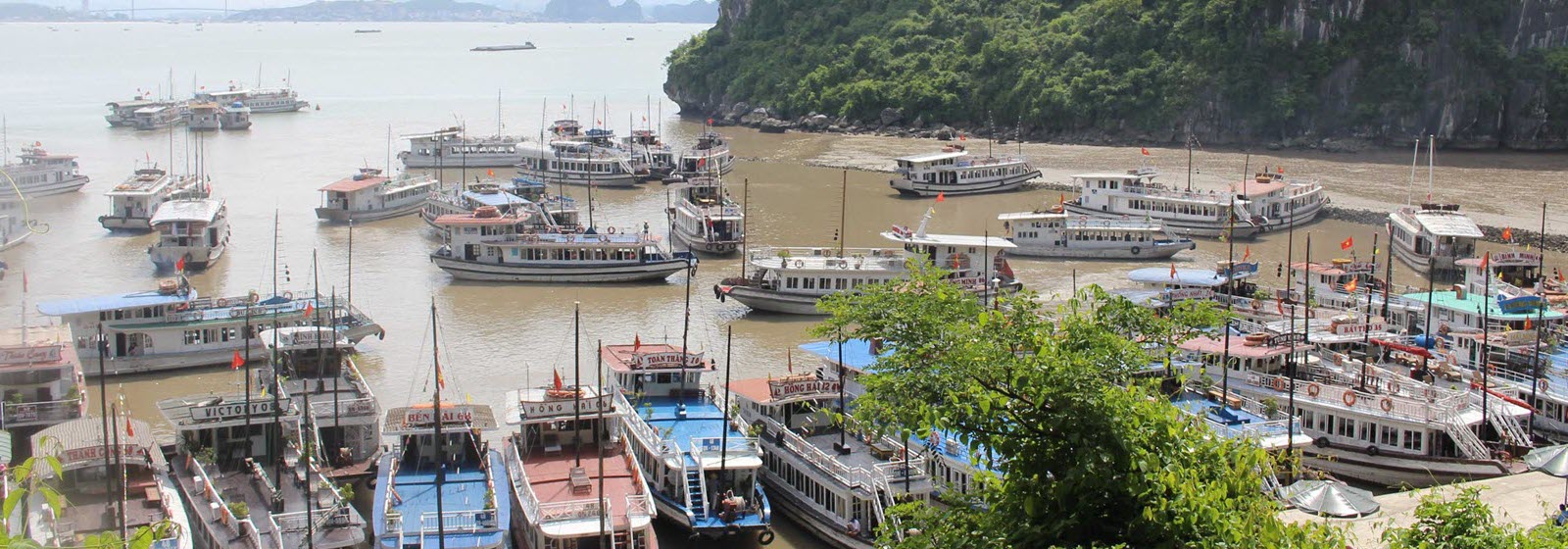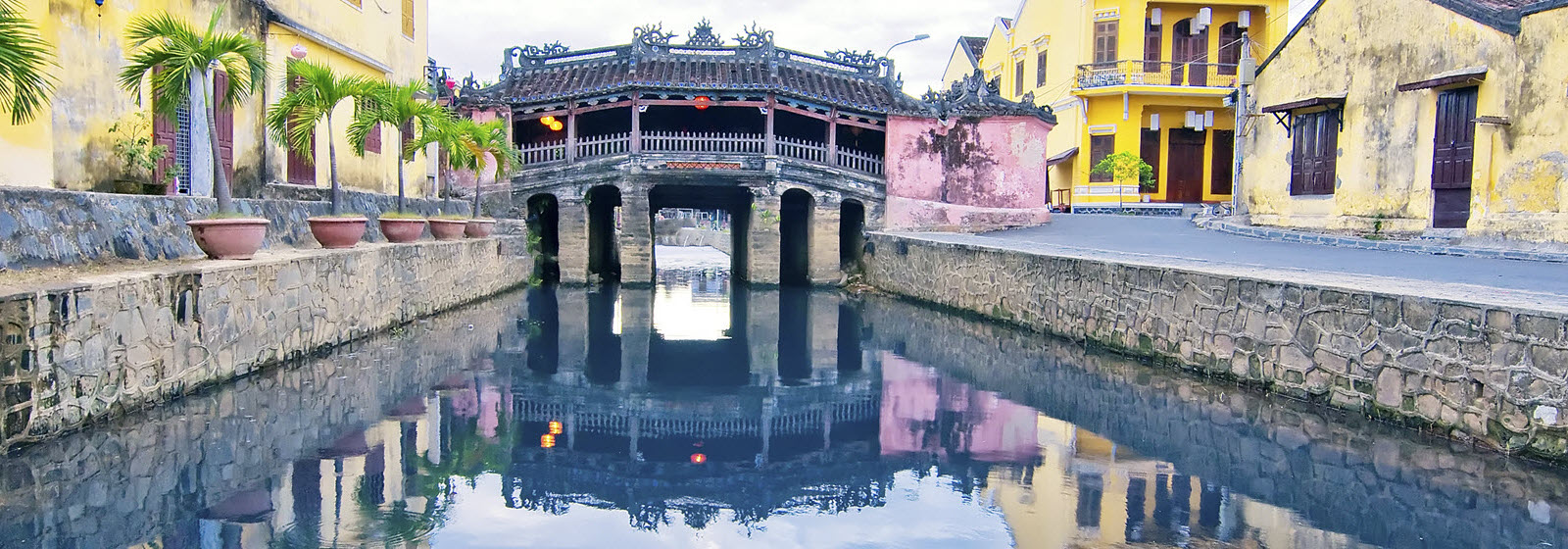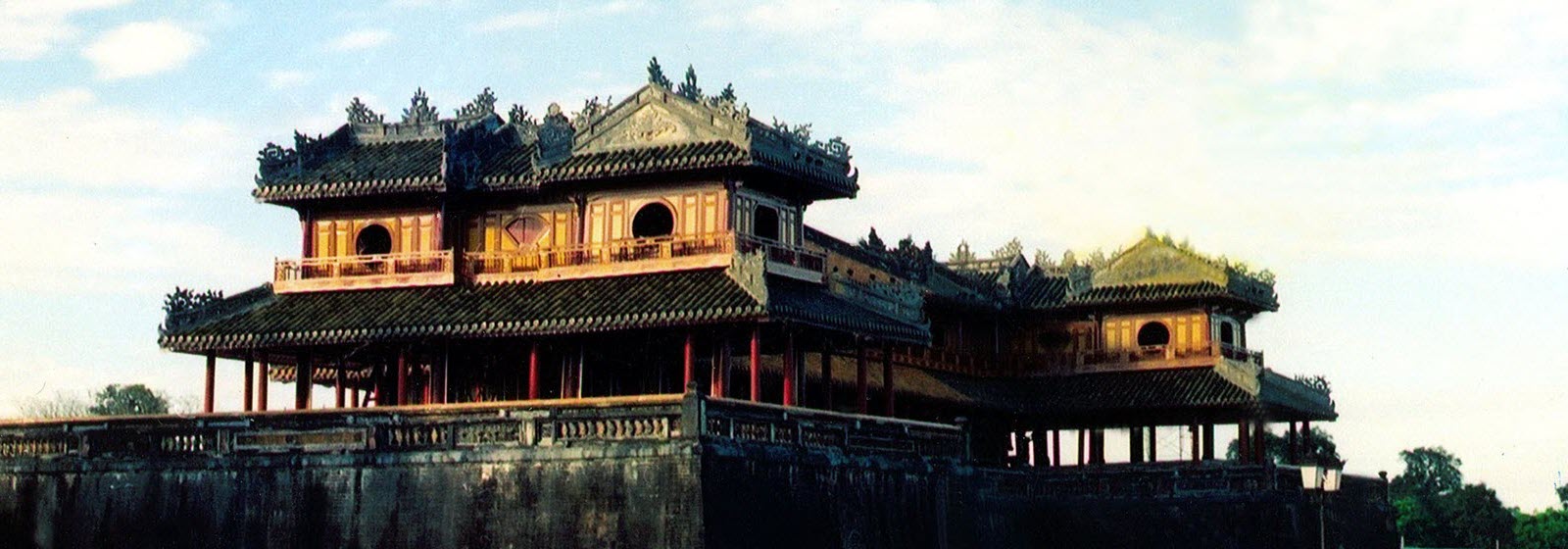Travel News
Ha Noi Travel map and infomation
Hanoi is a peaceful capital, where the Vietnamese people come out from the historic golden pages of the thousand years of Van Hien,
Today, these are busy commercial streets, high rise buildings are interwoven between the beautiful French colonial period villas, are hectic sales talk from of vendors around the boulevards along with the gentle lifestyle of Hanoiese like the savouring of sipping a cup of tea in the early morning light. All of them will make the hinterland of the Red River Delta 4 seasons of northern Vietnam attracting tourists from the first times.
1. Hanoi Travel Map
This map providing all the sightseeing you should give a try in the capital of Vietnam.
|
Currency: VND is the official currency in Vietnam. Some small vendor and shop for tourists do accept USD. But we highly recommend you to change your bill into VND The rate is around 23.000 VND for 1 USD. |
2. Weather in Hanoi
Ha Noi climate is typical of the North Vietnam climate with characteristics of tropical monsoon humidity, hot summer, heavy rain and cold winters with little rain.
Average annual temperature is 23.6ºC, May to September is the hot and rainy season, highest in June (29,8ºC), November to March is cold winter, the lowest in January ( 17.2ºC).
3. Hanoi tourist attractions:
Hoan Kiem Lake and Ngoc Son temple:
Hoan Kiem Lake was already considered as the most beautiful lake in the city. It's named after the legend of Vietnam's King Le Loi, who then returned the sword to god Kim Quy - The Tortoise god after the extermination of foreign invaders.
In the middle of this lake, the Ngoc Son temple was rebuilt on Ngoc (Jade) Islet, in the northern part of the lake during the 19th century. It was dedicated to Van Xuong, once considered the brightest star in Vietnamese literary and intellectual circles, and Tran Hung Dao, the national hero who led Vietnamese people to victory over Mongol aggressors in the 13th century.
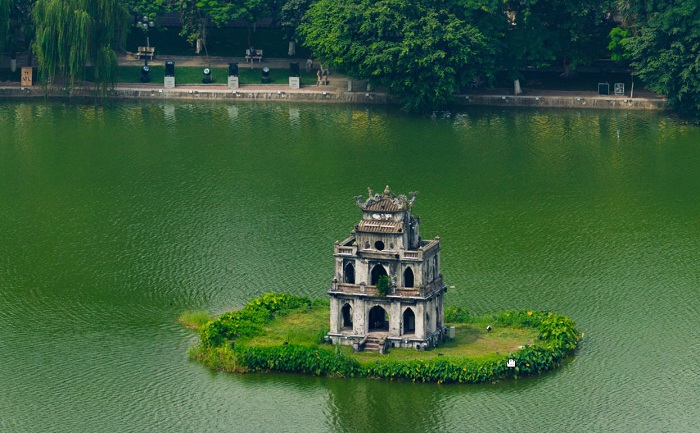
Imperial Citadel of Thang Long
The centre of Thang Long - Hanoi is located in the heart of the capital of Vietnam today, this is the most important and best preserved of Thang Long ancient citadel.
Thang Long Citadel was recognized by UNESCO as the world's cultural heritage. This is a huge architectural work, built by the dynasty in many historical periods and became the most important monument in the system of relics of Vietnam. Thang Long Imperial Citadel was built in the 11th century under the Ly dynasty. It has been a centre of constantly political power for almost 13 centuries.
.jpg)
The central area of the Thang Long Imperial Citadel - Hanoi is an excellent example of a long-standing cultural exchange, where cultural influences from the outside, many theories and ideas of the global value of human civilization, especially Buddhism and Confucianism, cultural exchanges with China in the north and the kingdom of Champa in the south. The Imperial Citadel reflects all of the important cultural exchanges and forms a unique culture in the Red River Delta.
Ho Chi Minh mausoleum:
Ho Chi Minh's mausoleum is the place where Uncle Ho's remains are located, so that the people of the country, especially the South Vietnamese and foreigners, can visit the beloved father.
Not only is the resting place of the great leader of the Vietnamese nation, but the whole landscape in the Uncle Ho's area is also the convergence of the essence of architecture and cultural space of Hanoi capital.
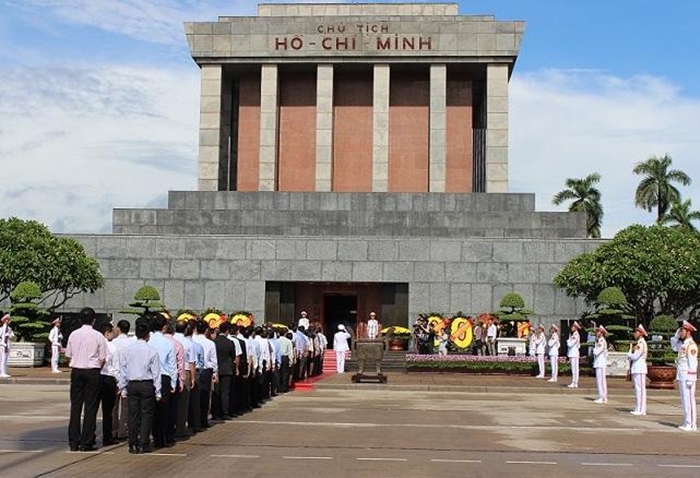
Hoa Lo Prison:
Beside cruel torture images, the brazen guillotine has put Hoa Lo Prison at the top of the top five most frightening places in Southeast Asia.
The French language of the prison at that time was Maison Centrale, meaning Central Prison or Hanoi Prison. This was the central prison of both Central and Tonkin, detaining many people, including political prisoners, patriots against the French colonial government from 1896 to 1954. At that time, Hoa Lo prison regularly holds about 500 prisoners with detention regime, extreme pressure harsh, barbaric. Along with the French barbarian's most devastating weapon was a giant cutting machine, the Hoa Lo prison was known to be one of the 10 most infamous prison in the world.
Ha Noi Old Quarter:
Hanoi Old Quarter is a common name of a long-standing urban area of Hanoi located outside of Thang Long Imperial Citadel. This urban area concentrates on small-scale industrial and commercial activities and exists up to the present time. Hanoi Old Quarter is a special place that you could deeply enjoy the unique Hanoi 1000-years olds. Wandering on the old streets, taking spectacular photos and getting some local specialties.
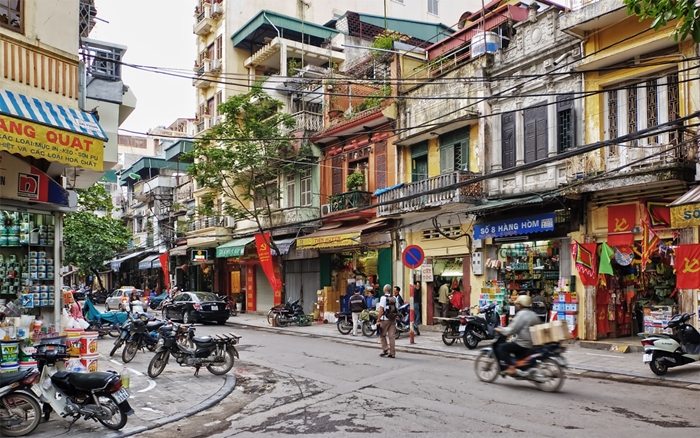
Temple of Literature:
Temple of Literature - Quoc Tu Giam The first university in Vietnam, where "born" many talented heroes of Vietnam.
Temple of Literature - Quoc Tu Giam, consisting of two main areas, Van Mieu and Quoc Tu Giam. The Temple of Literature is an area of worship of the saints and Confucius (551 - 479 BC) a sage of the Vietnamese Confucian. This is also the place where worshipped Chu Van An who is the typical teacher, the model of education in Vietnam.
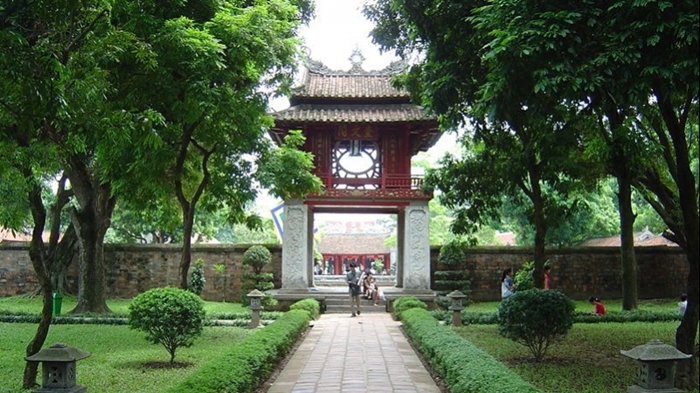
Not only that, Van Mieu - Quoc Tu Giam also preserved 82 styles of Dr. is considered National Treasure from International UNESCO recognized as Documentary World Heritage. This is considered as one of the precious cultural heritage, is the stone materials of previous generations. It is the eloquent demonstration of the studiousness of Vietnamese students
Tran Quoc pagoda:
Located on an islet in West Lake, is one of the oldest pagodas in Vietnam. Its construction was under King Ly Nam De (544- 548). Standing at one end of Thanh Nien Road, see the towers of the pagoda raising above the lake’s surface. Inside, there is a precious statue of Sakyamuni Buddha entering Nirvana, which is a masterpiece of Vietnamese sculpture art. A stele dating from 1639 tells the story of this pagoda.
Quan Thanh temple:
The three Han characters at the top of the entrance of Quan Thanh temple read Tran Vu Quan, which means that the temple is dedicated to Huyen Thien Tran Vu, the God who guarded and administered the north of the country. Saint Tran Vu was both a Vietnamese legendary character ( who assisted King An Duong Vuong in chasing away ghosts during the construction of Co Loa Citadel) and a Chinese legendary character( who guarded and administered the North).
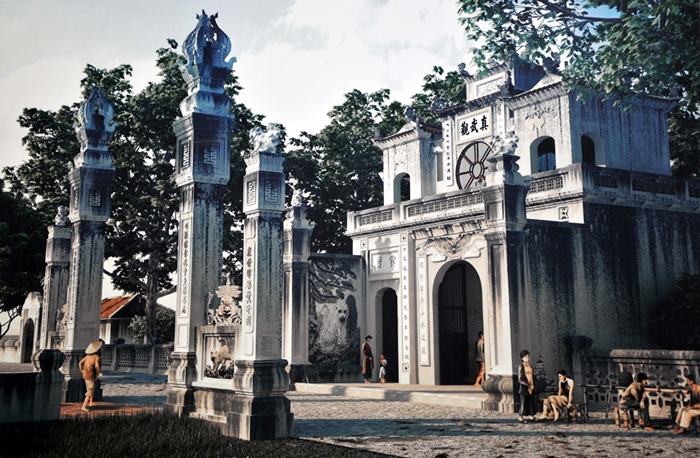
Quan Thanh temple was built during the reign of King Ly Thai To (1009- 1028). Special attention should be paid to the black bronze statue of Saint Tran Vu, was cast in 1677 located in the sanctum. Also noticeable, a 1.5m high ancient bronze bell hangs at the top of the three-door gate. In the temple, a small black bronze statue of Ong Trong, the chief artisan of the bronze casting team who made the bell and the giant statue of Saint Tran Vu. To commemorate the great contributions of their teacher, Ong Trong’students cast his status and placed it in the temple so that future generations would remember him.
Tay Ho Temple:
Tay Ho was an ancient village of Thang Long, located to the east of West Lake – At the entrance of the village, there is a temple to worship Mother Lieu Hanh, who had an exquisite talent for playing music, singing and writing poetry. Mother Lieu Hanh was so kind that she was raised as Thanh Mau (Holy Mother). Every year, on the 15th day of the 1st lunar month, many people come here, not only to worship Thanh Mai in the hope that she will offer them good things and good luck but also admire the beautiful landscape of the capital city.
Vietnam museum of ethnology:
With 15,000 artifacts, 42,000 films and color photos, 273 audio tapes, music, 373 videotapes, and 25 CD-Roms, the Vietnam Museum of Ethnology is an attractive place that tourist to visit, study, experience the culture of ethnic Vietnam. It is also home to a variety of folk and folk cultural performances in Vietnam, Southeast Asia and other parts of the world.
The prestigious travel site TripAdvisor has voted Vietnam Museum of Ethnology ranked fourth among the 25 most enchanting museums in Asia in 2014.
4. Shopping Places in Hanoi
Dong Xuan Market:
Dong Xuan Market is the biggest wholesale market in the North of Vietnam. The market offers a wide range of products such as clothing, footwear, household items, toys, fabrics with traditional designs, ... In addition, they also sell candy, souvenirs, food, ... On the evening of Friday, 7 and Sunday at the weekend, there is a night market in front of Dong Xuan market.
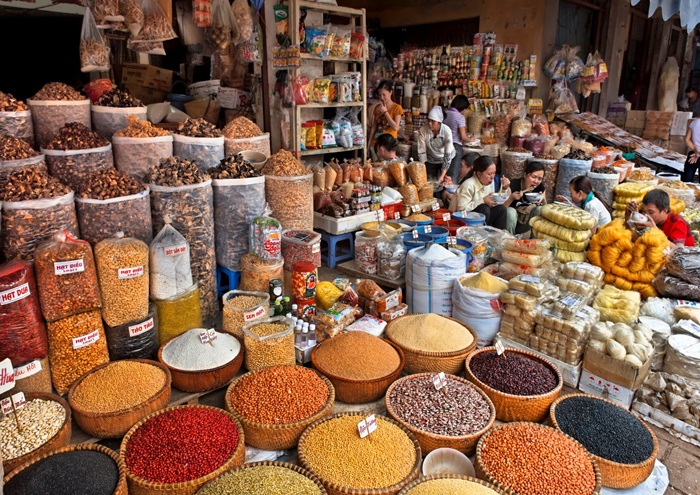
Hang Gai street:
Named as Silk Street, Hang Gai Street has become the busiest street in Hanoi with silk shops always busy to conquer the most choosy customers
The Hang Gai Silk Street is 250 meters long, but there are 120 business outlets, of which 91 are silk business or silk merchandise Merchants, and 29 others merchants businesses
Hang Bac street (sliver street):
Hang Bac (silver street), the special streets in Ha Noi with atmospheric street still retains many small outlets of jewelers selling rings, necklaces and many types of inexpensive fashion pieces. There isn’t one particular shop to check out; instead, take a wander from one end to the other and check out the jewelers, handicrafts and propaganda poster shops that are dotted along the street along with the history of the old trade villages in Hanoi. Early in the morning heard the echo of the hammer knock on the street, began a new day.
And 5. 5 local dishes you should try
Because of the geographical proximity to China, the cuisine culture of the Vietnamese capital has reflected Chinese influences. Moreover, the 4-season climate, as well as a wide range of fishes and seafood like prawns, shrimp, crab and more, have a distinctive flavour, promising a feeling of appetite for table companions
Bun Cha (Barbecued pork with rice vermicelli): Being picked as one of specific dishes of the northern region, it consists of grilled pork strips in a bowl of dipping sauce and is served with a plate of fresh Vietnamese herbs and noodle

Bun cha no 34 Hang Than Street, Hoan Kiem District, Hanoi
Nem cua be (crab spring rolls): This dish consists of fried rolls filled with sea crab and vermicelli noodles

Address: 117 Bui Thi Xuan street, Ha Noi
Cha ca (grilled fish with dill): It is one of the unique specialities in Hanoi with the main ingredient of mudfish meat (ca nheo) or snakehead one (ca qua). A server will set up a hot pot on your table and other elements such as fresh herbs, rice noodles, a bowl of roasted peanuts and a dipping fish sauce.
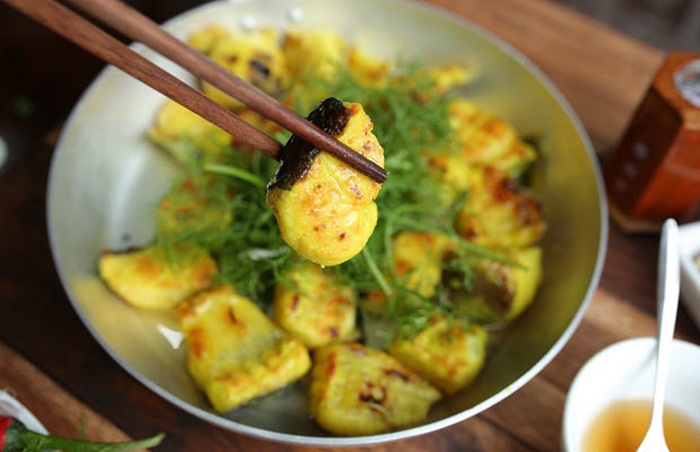
14 Cha Ca Street, Hoan Kiem, Hanoi.
Che (Vietnamese sweet soup): It is a sweet soup that is typically made from several ingredients mixed together and served in a large beer glass. Some of typical ingredients are black bean, corn, taro, tapioca, jelly, etc.
Ba Thin store in Hang Bo Street.
Cafe Trung (Vietnamese egg coffee): It is the most popular coffee in the north of Vietnam, a thick dark coffee topped with egg yolk whipped with condensed milk into an airy froth
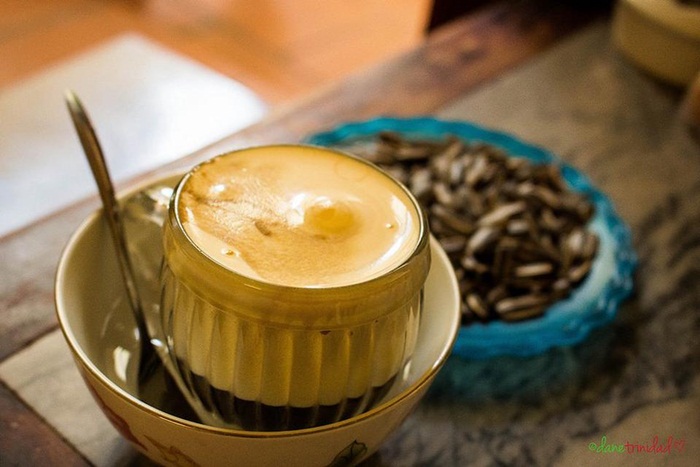
Address: Leu coffee: 2nd Floor, No.1, Ta Hien Street, Hoan Kiem, Hanoi;
other news
- Things to do in Halong City
- Da Nang - Vietnam travel map and guide
- Ba Ria - Vung Tau Information
- Nha Trang Information and Guide
- Ho Chi Minh City Information and Guide
- Vietnam road along ocean named among Asia's most spectacular
- Everything about Vietnam weather -Best time to visit Vietnam
- How to Travel Cambodia from Vietnam.
- Vietnam and Cambodia: This has to be your destination for your next holidays!
- Son Doong Cave - the greatest new place in the 21st century


